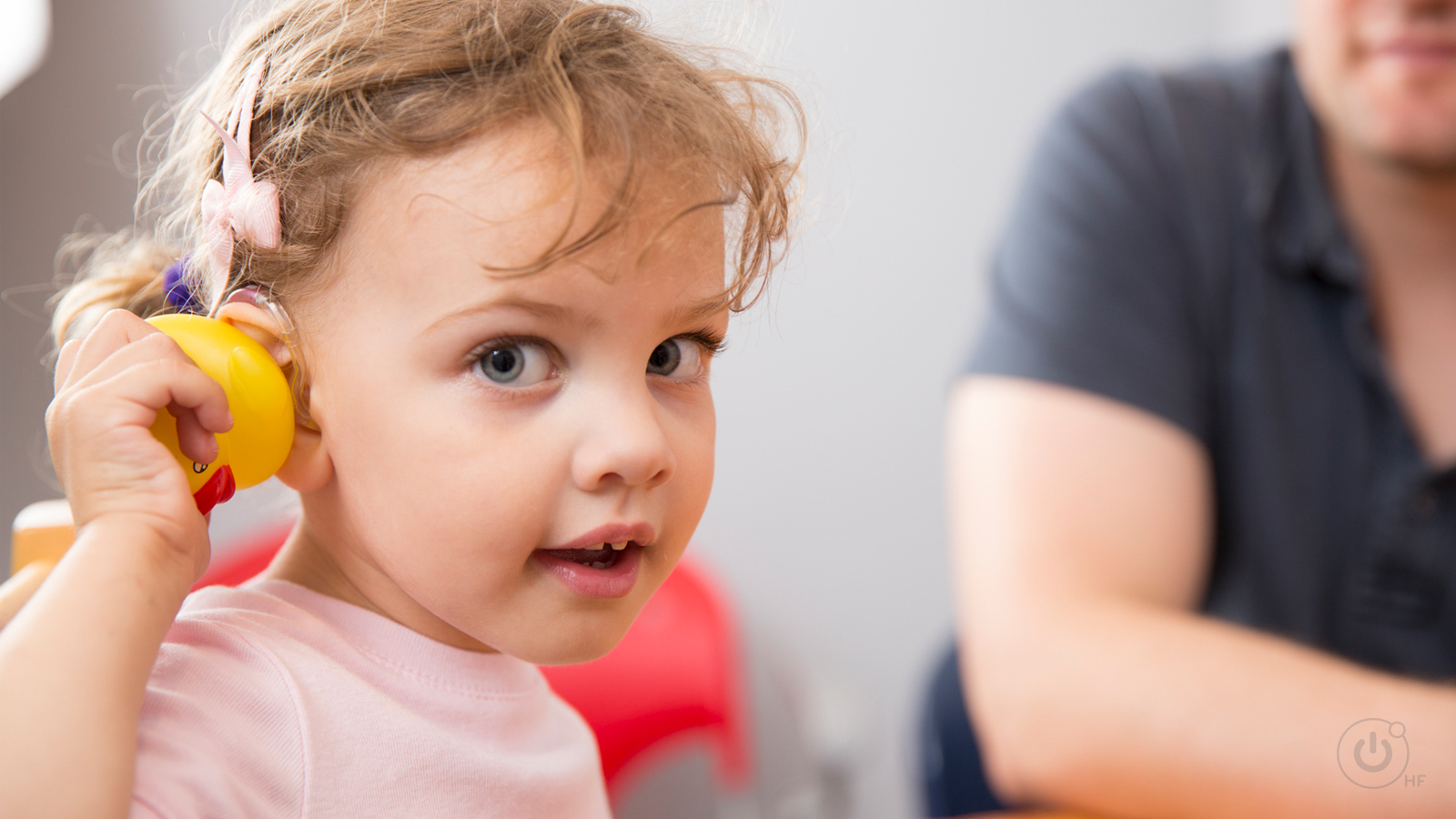If your child recently received her first set of hearing aids or just had her cochlear implant(s) turned on, this may be a very exciting and overwhelming time for you. You may find yourself scrutinizing your child’s reactions, desperate to know if she is hearing each and every sound. Unless you have older children who are deaf or hard of hearing, it can be difficult to know what to expect. Read below for some ideas about what skills to look for and what activities you can do to help your child start learning to listen!
1. Be patient, and try not to compare your journey to others’. The progression of listening development can vary significantly from child to child. Some factors that can affect how a child responds to sound include the child’s age, the degree of loss, and the amount of time he or she has been wearing hearing technology. A 2-month-old baby who just received hearing aids may respond to sounds very differently than a 3-year-old who just received cochlear implants after wearing hearing aids for several years. A child with a profound hearing loss who is wearing hearing aids as part of the cochlear implant candidacy process is going to respond very differently than a child with a mild hearing loss who uses hearing aids. You get the idea. Are you having trouble helping your child adjust to keeping her hearing aids or cochlear implants on? Click here for our blog post with a list of ideas and suggestions.
2. Consider your child’s “listening age.” Listening age refers to the amount of time that she has had adequate access to sound. For example, if your 15-month-old was fitted with bilateral cochlear implants when she was 12 months old, then her listening age is 3 months. To put it simply, her ears should be responding to sound similarly to the way a 3-month-old would. Listening age is a simple frame of reference to keep in mind as you are monitoring your child’s responses to sounds.
3. Look for cues from your child about how he or she responds to sound. This can look very different from child to child. Does your child startle? Does she stop moving her body and get very still? Do her eyes widen? Does she furrow her brow? Sometimes these responses can be subtle and it may take time for you to get to know the unique way your child responds when she hears a noise.
4. When you do see a response, be sure to respond positively. Smile, point to your ear and say, “Yes! You heard that!” Talk to her about what she heard. Show her the sound source when you can. If your baby startles when she hears the dog bark, you can say, “Yes, you heard the dog barking! Woof woof woof!” and then bring her over to the dog so she can begin to make the connection between what she heard and what was creating the noise.
5. Make a “Learning to Listen” box. Create a box of toys for early Learning to Listen sounds. Not sure what the Learning to Listen sounds are? Then be sure to stay tuned for our upcoming blog post where we break it down for you! I like to start with the Ling 6 Sounds (ah, oo, ee, mm, ss, sh) and put six toys associated with those sounds in the box (airplane, train, car, ice cream, snake, baby). Keep these toys in a safe place and try incorporating them into play with your baby. The Ling 6 Sounds are particularly important for new listeners. Since your baby can’t tell you what she is and isn’t hearing, this is a simple, fun way to get a better idea of what she’s hearing while teaching her vocabulary and concepts at the same time! Again, if you’re looking to learn more about what the Ling and Learning to Listen sounds are and how you can use them with your child, be sure to check out back soon for our upcoming blog post on this topic!
6. Don’t over test!! Listening should be fun. Many parents find themselves “testing” their baby’s hearing by calling their child’s name, clapping hands, banging pots and pans behind the head—you get the idea. While this can be tempting to do, it is not fun or motivating for your child. In fact, it can completely backfire. These types of sounds do not have meaning for your baby and she may learn to stop responding or tune these noises out. Save the testing for your audiologist to do. Instead, try to remember that listening should be fun and meaningful. The more you incorporate listening into play, the more likely your baby will be to respond!
Questions or comments? Be sure to share below!






